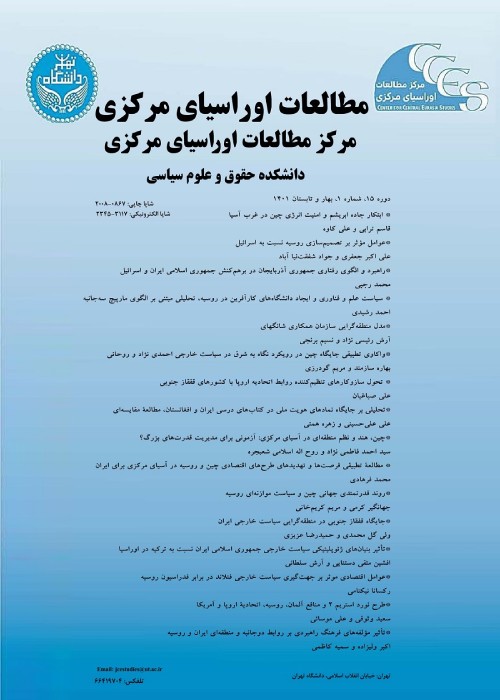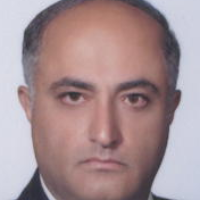Taliban Political Economy(2001-1996)
The rapid emergence of Taliban in Afghan politics in the 1990s and its governance is one of the important changes in Afghanistan in the last four decades. The emergence of the Taliban was a surprise. The Taliban, who appeared from the south of Afghanistan, managed to control Kabul and the northern regions of the country on several occasions. After capturing Herat, they were able to capture Kabul easily. Although two decades have passed since the fall of the first government of this group, there have been fewer scientific analyzes and researches about its economic and political-economic issues. A detailed examination of the economy and political economy of the first Taliban government helps us to know this group better. Understanding the political economy of the Taliban adds to our knowledge of the nature and characteristics of the Taliban. In order to understand the political economy of the Taliban, this research examines the financial resources of this group and the economic situation of Afghanistan under their rule. The focus of this research is on the political economy of the Taliban. The research seeks to determine the nature of the political economy of the Taliban.
Research Question:
What was the type of political economy of the first Taliban government between the years 1996-2001?
Research Hypothesis:
The hypothesis is that the nature of the political economy of the Taliban was a combination of the political economy of terrorism and conservatism, which claimed to follow Islamic teachings in managing the economic issues of the society and was not compatible with the usual approaches of political economy in the world. It seems that the political economy of the first Taliban government cannot be studied in the framework of the popular political economy approaches in the world. In other words, the political economy of the Taliban cannot be analyzed in the framework of classical, radical and neoliberal political economy approaches. The Taliban's view of the economy was religious and ideological.
Methodology and Theoretical Framework:
In this article, a qualitative method and a descriptive-analytical approach have been used to investigate the political economy of the first Taliban government. The approach of the political economy of terrorism and some components of the political economy of conservatism is the theoretical framework of this research.
The Taliban leadership's approach to the economy was ideological. They were exerting their religious, jurisprudential and economic rules in the areas under their control. This view worsened the economic situation of Afghanistan. Mullah Omar and other Taliban leaders did not believe in solving people's economic problems through government intervention and scientific programs. According to them, only God can solve people's economic problems. The Taliban did not follow any specific rules or economic system to run Afghanistan's economy. Mullah Omar issued several orders in the first government of the Taliban. The Taliban were loyal to these orders. The Taliban government had numerous internal and external financial resources. They were using traditional trade and transit as official sources and drugs and mines as informal sources. Afghanistan's trade with the Persian Gulf countries and Pakistan developed during the Taliban regime. Trade and transit were the largest official source of income for the Taliban. Approximately 300 trucks daily went from Kandahar to Central Asia and through Herat to Iran. About 200 other trucks were traveling to northern Afghanistan daily through Jalalabad and Kabul customs, earning large sums of money for the Taliban. Smuggling was another source of funds for the Taliban. Mines were another internal source of funding for the Taliban. In the areas under the control of this group, the Taliban were extracting mines in an unprofessional and non-standard manner. The Taliban also met part of their financial needs through tithe and zakat. The Taliban also earned a lot of money through drug cultivation and trafficking. The Taliban did not establish the cultivation, production and trafficking of drugs in Afghanistan, but they were its promoters.During the Afghan war against the Soviet Union, jihadist groups met part of their financial needs through the sale of drugs. But when the Taliban came to power, they expanded poppy cultivation and smuggling to meet the needs of their war machine and government and allowed ordinary farmers to grow it. Under the first Taliban government, opium production in Afghanistan increased dramatically. The sale of opium provided many of the financial needs of this group. The Taliban used the sale of opium as an economic and political tool. Some of the Taliban leaders had made a lot of money from opium cultivation, smuggling and trade.
- حق عضویت دریافتی صرف حمایت از نشریات عضو و نگهداری، تکمیل و توسعه مگیران میشود.
- پرداخت حق اشتراک و دانلود مقالات اجازه بازنشر آن در سایر رسانههای چاپی و دیجیتال را به کاربر نمیدهد.



